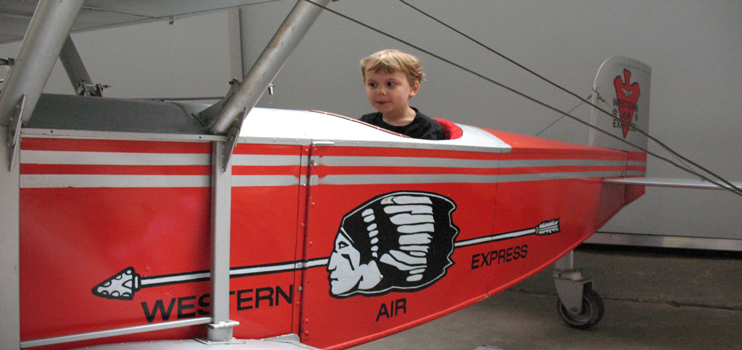Delta's new flight museum
07 August, 2014
4 min read
By joining our newsletter, you agree to our Privacy Policy


Museums, the best of them, tell a story. And the story the new Delta Flight Museum tells is dramatic. Tracing the history of one airline, the 68,000 square-foot facility, located on the northern reaches of Hartsfield-Atlanta International Airport, manages to illuminate – in meticulous detail – the history of the airline industry as a whole. It does that by looking at Delta’s legacy, the constituent carriers that coalesced to form a global powerhouse. Northwest, Northeast, Western and Pan Am are all represented, as are other smaller airlines.
The non-profit museum (there’s an admission fee) unfolds the saga via interactive information kiosks and assorted airline artifacts, the most compelling of which is a squadron of actual airliners. Out front Delta’s parked a 757-200, and a DC-9-50, both painted in the carrier’s classic “widget” livery. But it’s inside hangars One and Two respectively that the real show plays out.
Enter the museum and take an immediate right turn. The first thing that catches your eye is an immaculately restored DC-3 proplliner – Ship 41, tail number NC2834. Take a while to drink in the classic design of the airplane. It’s polished bare-metal reflects the rays of sunlight that filter in the expansive hangar bay.
Up ahead is a five-passenger, 90 mph Travel Air – the craft that launched Delta’s first passenger service between Dallas and Jackson, Mississippi. The Propeller Age artifacts arrayed in Hangar One include a toy Western Air Express bi-plane for the kids to play in. This AirlineRatings’ author’s grandchildren were fascinated by it. It was a tough to pry them away. They oohed and aahed and giggled and I explained to them how airplanes fly.
Over along the far wall of Hangar One is a visual playground for adult aviation enthusiasts: early airline schedules from the carriers with which Delta merged, route maps that etch the carrier’s first east/west routes across the American South, cotton balls and chewing gum issued to flyers of an earlier era to muffle the sound of the piston engine and equalize pressure on their ears.
Hangar Two houses the star of the show: a Boeing 767-200, The Spirit of Delta. Employees purchased the airplane for the carrier by raising $30 million.
Enter the ship and grab a seat in first class. No charge for the upgrade. Peak inside the cockpit or head to the tail, along the way taking in displays of pilot and flight attendant uniforms of the early jet age.
Down below, on the ground floor, get a preflight checklist and perform a walk around inspection of the massive seven-six, the way the first officer (co-pilot) does. A pamphlet lays out your beneath-the belly route, explaining each step in layman’s terms. By the time you reach the tail and crane your neck up at the elevators (which make the aircraft ascend and descend) you’ll have a decent idea of the fundamentals of flight.
If the star of the show is the 767, the sexiest exhibit is the Boeing 737-200 flight simulator. The museum says it’s the only real full-motion flight “sim” open to the public in the United States. Take a look inside at no extra charge. “Fly” the seven-three for 45 minutes for US$395. You’ll have to call ahead for reservations.
While the Delta Flight Museum isn’t far from Delta headquarters, it’s not immediately adjacent to the mid-field terminal complex of the world’s busiest airport. If you’re passing through ATL and want to see it best bet is to grab a cab.
Find out more about the museum by going to the Web site at www.deltamuseum.org . Contact them via e-mail at [email protected]. The phone number is 1-404-715-7886.
The Delta Flight Museum won’t be mistaken for Smithsonian’s National Air and Space Museum. But what it does, it does exceptionally well. If you’ve got a long layover in Atlanta you could spend your precious time in far less fascinating fashion.
Get the latest news and updates straight to your inbox
No spam, no hassle, no fuss, just airline news direct to you.
By joining our newsletter, you agree to our Privacy Policy
Find us on social media
Comments
No comments yet, be the first to write one.

